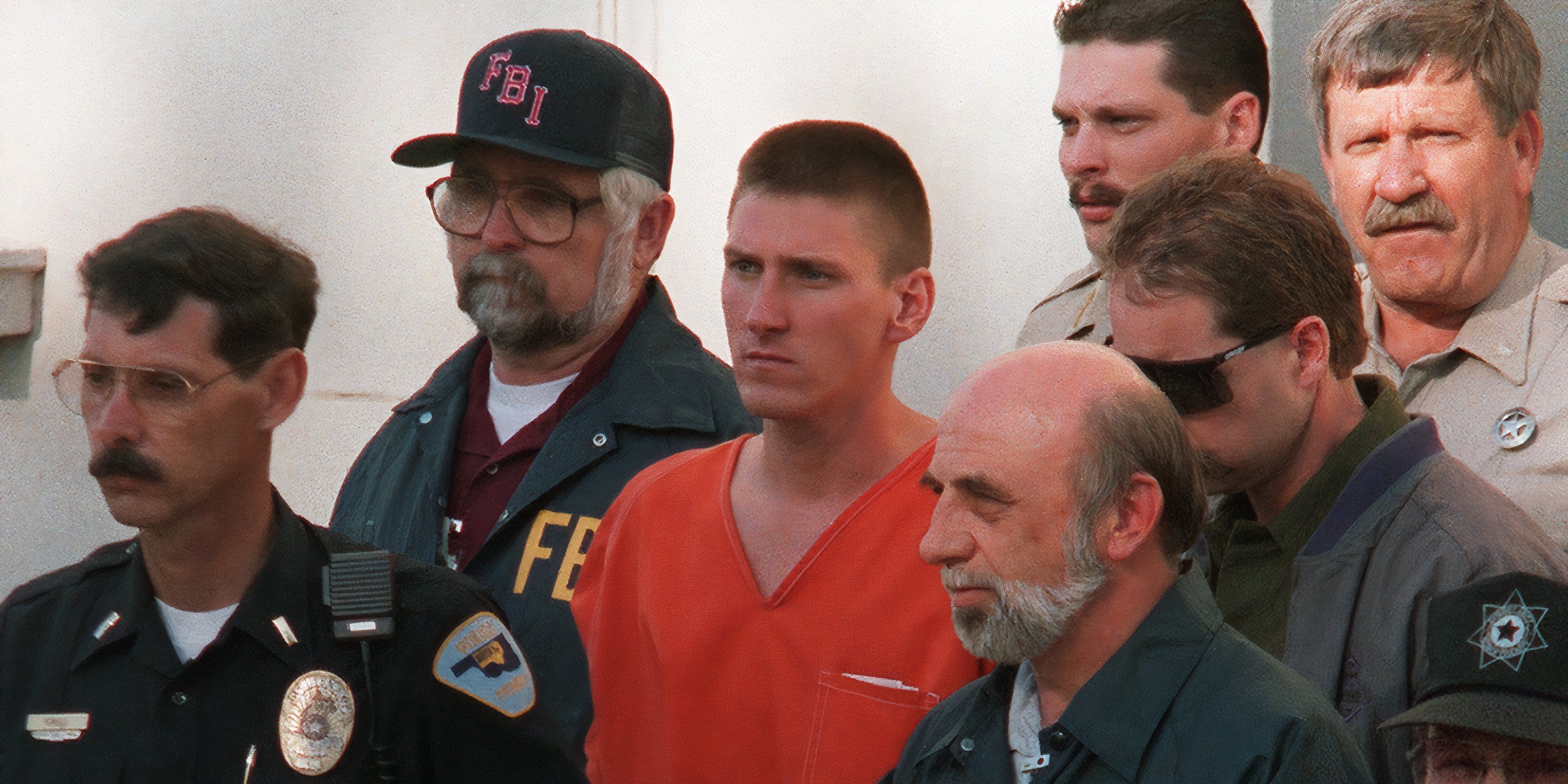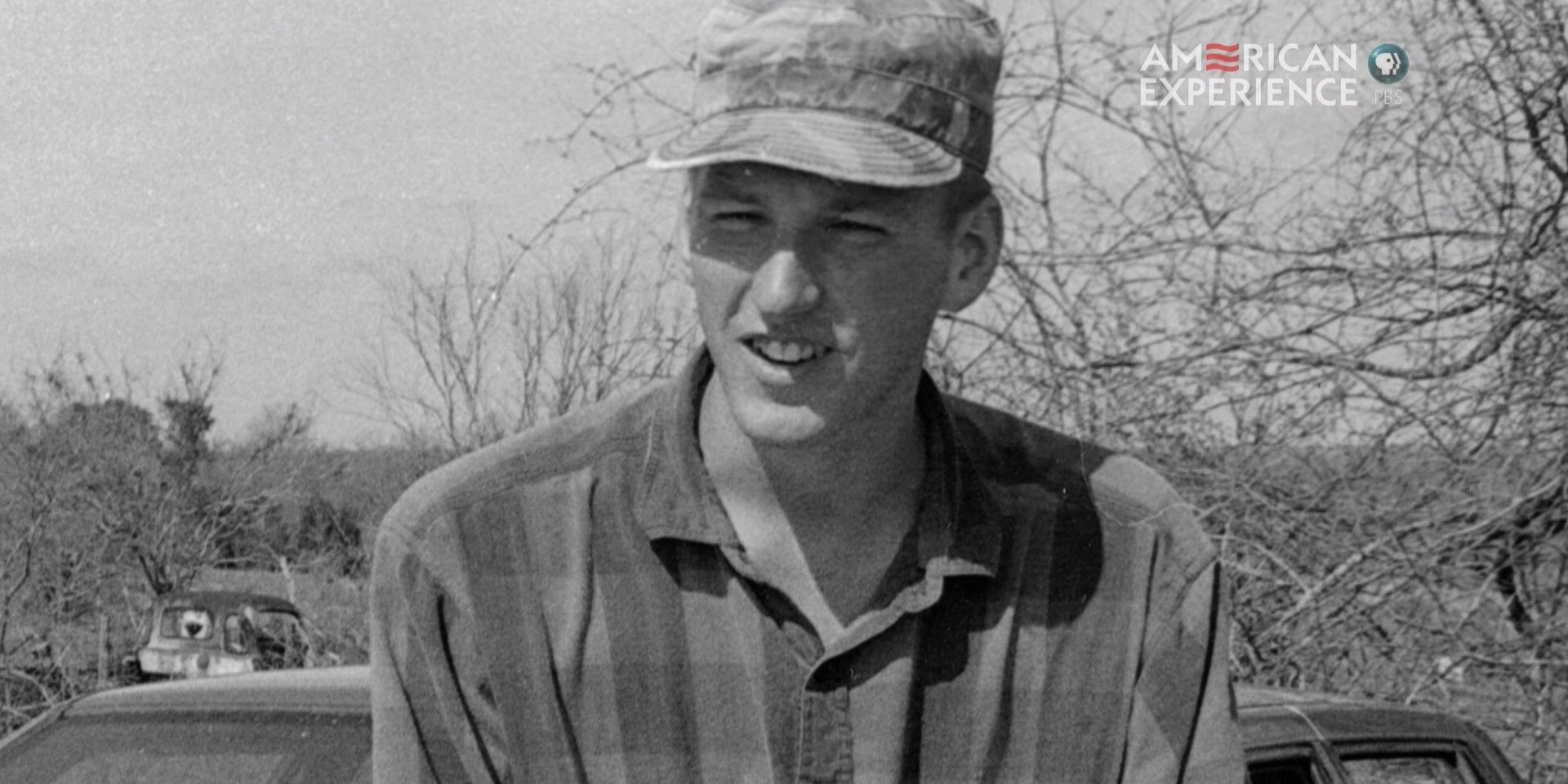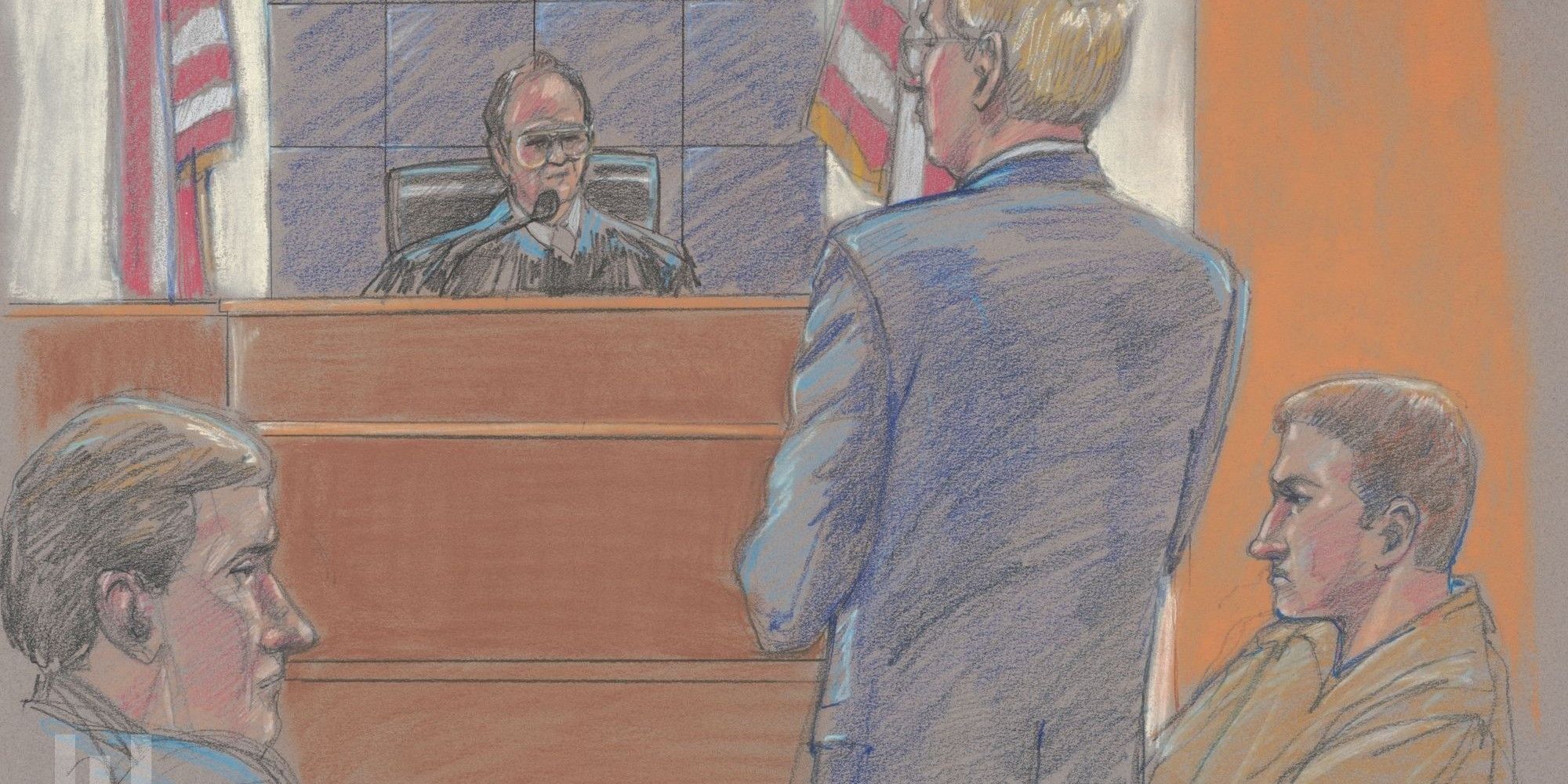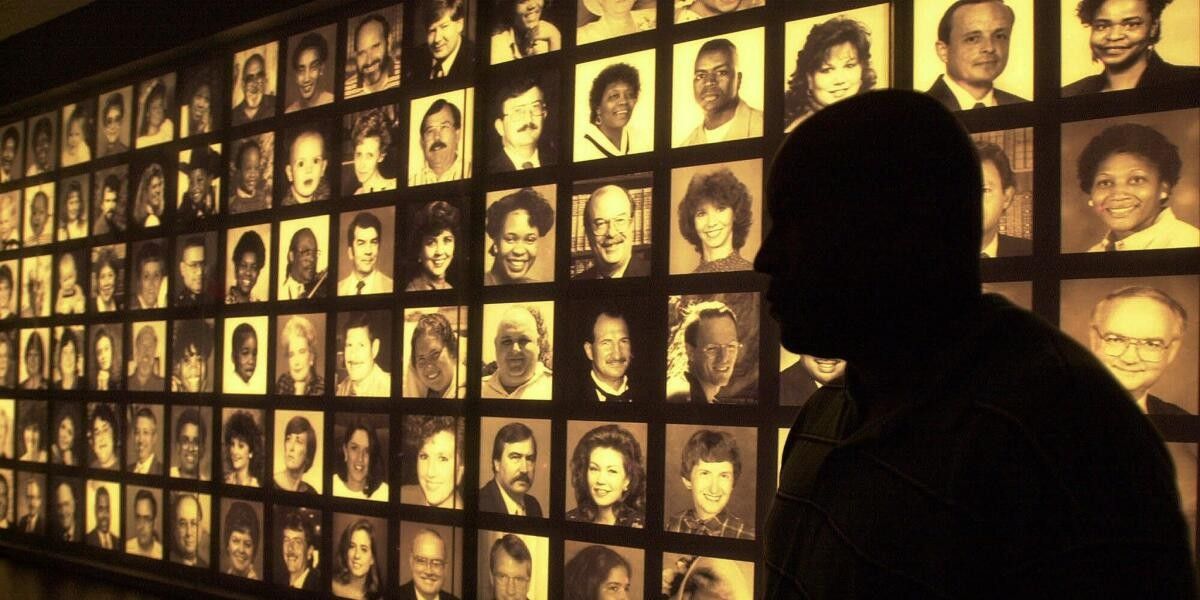
Netflix’s newest crime docuseries titled “Oklahoma City Bombing: American Terror” delves into the life of Timothy McVeigh, a man who carried out one of the most devastating acts of domestic terrorism in history on April 19, 1995. By detonating a bomb at the Alfred P. Murrah Federal Building in Oklahoma City, he claimed the lives of 168 individuals and injured hundreds more. This latest addition to Netflix’s collection of true-crime documentaries follows the events surrounding McVeigh’s subsequent fate. Produced by Greg Tillman, this documentary serves as a memorial for the tragic anniversary of the bombing.
On April 19, 1995, McVeigh, a Gulf War veteran who felt disenchanted with the U.S. government, drove a Ryder truck loaded with more than 5,000 pounds of ammonium nitrate and nitromethane from Kansas to Oklahoma City. He parked the explosive-laden vehicle outside the Alfred P. Murrah Federal Building and detonated it. The documentary Oklahoma City Bombing: American Terror delves into McVeigh’s reasons for carrying out the bombing and his eventual capture, using reenactments of that day, interviews with survivors, and recordings of McVeigh following his arrest.
Timothy McVeigh Was Arrested On The Day Of The Oklahoma City Bombing But Wasn’t Identified As The Bomber Until 3 Days Later
McVeigh Was Pulled Over For Having No Licence Plates On His Car



Following the bombing incident, Timothy McVeigh was driving a yellow Mercury on Highway 35 when he was stopped by Oklahoma Highway Patrol Officer Charlie Hanger. Hanger had spotted that McVeigh’s vehicle lacked a rear license plate and decided to pull him over for inquiry; it was also discovered that McVeigh possessed a Glock .45 caliber semi-automatic handgun. McVeigh was subsequently arrested by Hanger on charges of not displaying a rear license plate, lacking proof of vehicle insurance, illegal possession of a firearm in a car, and illegally carrying a concealed weapon (as detailed by the Oklahoma Memorial Museum)).
During McVeigh’s detention, law enforcement officials were on a hunt for the culprit behind the bombing. They scrutinized the remnants of the Ryder truck involved in the explosion and cross-checked the license plate and ID number found among the debris; these numbers corresponded to McVeigh’s alias, Robert Kling. Once they traced the details back to a Ryder facility in Kansas, a composite sketch was swiftly prepared for the suspect (by the FBI). After circulating this sketch throughout the city, the manager of the Dreamland Motel recognized the suspect as Timothy McVeigh and also recalled that he had parked a Ryder truck in the parking lot (as reported by TRUTV).
Three days following the Oklahoma bombing, officials declared Timothy James McVeigh as their main suspect. At that time, McVeigh was scheduled for a bond hearing concerning charges of driving without a license and illegal weapon concealment. His arrest for the bombing might have led to his release on bail, but instead, he was immediately taken into custody in connection with the explosion, without the option of posting bond. Terry Nichols, McVeigh’s accomplice, surrendered to authorities on April 21, 1995.
Timothy McVeigh’s Convictions & Sentencing Explained
He Was Sentenced To Death In 1997


On August 10, 1995, Timothy McVeigh and Terry Nichols were charged for their part in the Oklahoma City bombing. A co-conspirator, Michael Fortier, agreed to testify against McVeigh and Nichols, receiving leniency for his own crimes and immunity for his wife, Lori, as a form of bargain. On February 20, 1996, Judge Richard Matsch decided that the trial would be moved from Oklahoma City to the District Court in Denver, Colorado, due to the belief that it was impossible to conduct a fair trial for McVeigh in Oklahoma (as per Famous Trials)).
Timothy McVeigh spent time in the top-security U.S. prison in Florence, Colorado. During his stay, he conversed with journalists extensively, as mentioned by reporter Lou Michel in a Netflix documentary, having recorded about 60 hours of discussion. McVeigh faced trial on May 12, 1997, and was accused of 11 federal offenses, including conspiracy to employ a device of mass destruction, using such a device, causing destruction with explosives, and eight counts of first-degree murder; it’s important to note that he was only charged with the murder of the eight police officers who perished in the bombing (as stated by the Death Penalty Information Center).
At the time of McVeigh’s court proceedings, it was revealed that his intense fascination with firearms, deep-seated animosity towards the U.S. administration and federal agencies, a thirst for retribution following the 1993 Waco siege, which coincidentally occurred on the same day as the Oklahoma bombing, were key factors driving his criminal act. McVeigh was significantly influenced by the novel “The Turner Diaries” penned by William Luther Pierce; copies of two pages from this book were discovered in his vehicle post-arrest (as reported by CourtTV)). On June 2, 1997, Timothy McVeigh was declared guilty on all charges and, a week later, on June 13, he received the death sentence through lethal injection.
Timothy McVeigh Was Executed In June 2001 In Indiana
He Was Executed By Lethal Injection At Age 33

As a passionate cinephile, I’d rephrase the given statement as follows: From 1999 until my transfer to USP Terre Haute in Indiana, I, Timothy McVeigh, was confined at ADX Florence in Colorado, on death row. My plea for a review of my execution sentence was rejected in September 1999. In December 2000, I voluntarily dropped all remaining appeals and requested to face the consequences as swiftly as possible (as reported by The New York Times). The original execution date set for January 16, 2001, was changed to June 16; however, it was rescheduled for a month later on May 10 (according to CNN).
In my perspective as a movie reviewer, I recently came across some startling revelations about the infamous Oklahoma City Bombing case. As reported by The Guardian, it was disclosed that during Timothy McVeigh’s trial, around 3,100 crucial documents had been missed and not handed over to his legal team. This shocking discovery prompted a delay in his execution, allowing for a thorough review of the undelivered documents.
However, despite this reprieve, McVeigh remained unrepentant for his heinous actions right up until his execution by lethal injection on June 11, 2001, at the tender age of 33 – a stark reminder of the chilling indifference that characterized him throughout his life (as detailed in The Independent).
The riveting documentary, “Oklahoma City Bombing: American Terror,” provides an unflinching portrayal of McVeigh’s chilling actions and their profound impact on countless lives. His role as the architect of one of America’s darkest chapters will forever be etched in our collective memory as a grim testament to the devastation that can be wrought by one man’s twisted ideology.
References: Oklahoma National Memorial, Federal Bureau of Investigation (FBI), truTV, Famous Trials, Death Penalty Data Center, Court TV, The New York Times, The Guardian, and The Independent.
Citations: Oklahoma National Memorial, FBI, truTV, Famous Trials, Death Penalty Information Center, CourtTV, The New York Times, The Guardian, and The Independent provide the source material for this information.
Read More
- Gold Rate Forecast
- Silver Rate Forecast
- Honor of Kings returns for the 2025 Esports World Cup with a whopping $3 million prize pool
- PUBG Mobile heads back to Riyadh for EWC 2025
- USD CNY PREDICTION
- Kanye “Ye” West Struggles Through Chaotic, Rain-Soaked Shanghai Concert
- Arknights celebrates fifth anniversary in style with new limited-time event
- Hero Tale best builds – One for melee, one for ranged characters
- Every Upcoming Zac Efron Movie And TV Show
- Grimguard Tactics tier list – Ranking the main classes
2025-04-19 00:30